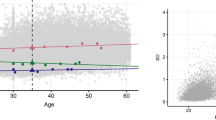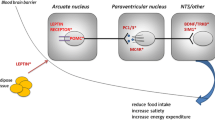Abstract.
Twin studies are useful designs for decomposing genetic and environmental influences on traits, with the basic goal being to map variations in phenotypic similarity onto variances in genetic similarity. In this review, we provide an overview of twin studies that have been used to decompose the genetic and environmental influences behind body composition, eating style, and their covariation. Although many published reports have established that genes contribute anywhere from 50–90% of the variance in body mass index (BMI, kg/m2), fewer studies have used laboratory- based body composition measures. Moreover, comparable studies of human eating style are even more scarce. Advances in the laboratory measurement of human eating behavior may increase the yield of twin studies that solely focus on body composition.
Similar content being viewed by others
Author information
Authors and Affiliations
Corresponding author
Rights and permissions
About this article
Cite this article
Keller, K.L., Pietrobelli, A. & Faith, M.S. Genetics of food intake and body composition: lessons from twin studies. Acta Diabetol 40 (Suppl 1), s95–s100 (2003). https://doi.org/10.1007/s00592-003-0038-6
Issue Date:
DOI: https://doi.org/10.1007/s00592-003-0038-6




